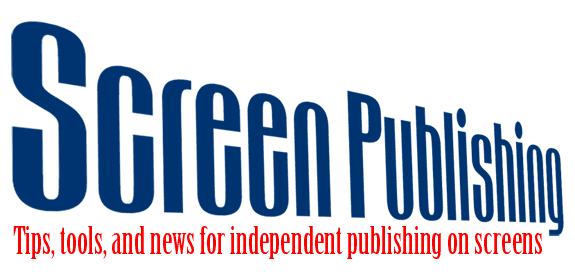InDesign to EPUB and AZW
I was proudly updating a techie friend recently about the progress I’ve been making in my latest ebook conversion for Kevin. I’d mentioned it a few weeks prior. His response was not “That’s awesome!” but rather “Why does it take so long?” Not exactly what I was hoping for, but definitely a fair question.
It took me about a week to remind myself how InDesign works (it had been at least a year since our last InD project), to learn how InDesign book documents (.indb) work, and to get up to speed with InDesign CS5.5’s new epub export features. I highly recommend the Lynda tutorials for that set of information. I also leaned on Liz Castro’s EPUB Straight to the Point and Rufus Deuchler’s How to Create an eBook with Adobe InDesign CS5 (still helpful post-CS5.5). And since the cardinal rule of working in InDesign is to apply styles consistently, I found India Amos’ post on how she names and manages styles to be very helpful.
For my setup, I created a Document preset with a single page (facing pages turned off) with a master text frame. Although it doesn’t make any difference Rufus Deuchler recommends a page size (live area) of 600×800 pixels; Terry White uses 51x66p). (MobileRead has a great e-reader matrix with display dimensions.)
I created a separate InDesign document for each chapter in the book. Chapter by chapter, I imported my text from Word (previously described here). After importing the first chapter, I started to create my character and paragraph styles. When creating subsequent chapter, I imported the styles from the previously created chapter. All chapters/documents were pulled into a single InD book file. I struggled a bit to remain mindful of my style source and to keep my styles synced.
Once I finally got my InD book and styles all set up and my, I started to experiment with generating EPUBs. It took me another week to troubleshoot the errors I found during testing and validation.
The first issue I came up against was related to images. I initially inserted very high-res images that resulted in a ginormous epub file. I replaced and relinked them in InDesign, but upon re-export, InDesign seemed to disregard my export settings. Instead of exporting at 150dpi, they came out at 72dpi, giving me the opposite problem of pixelated images. I posed the problem to the helpful folks who participate in the #eprdctn conversation, and @markerrett suggested replacing the images after export. This means unpacking the epub, navigating to the images folder, and replacing all of the images with images of the same name, created to the desired spec. Worked like a charm.
I wrestled with embedded fonts. The first problem I had was with the descenders on the last line of text getting cut off. After taking Liz Castro’s advice and adding a font declaration to the META-INF folder, the descender problem was fixed. However, I was still getting validation errors relating to fonts (maybe because some were true-type instead of open-type?). Because the typography in this book was not complicated (one font is fine), I decided to re-export the epub WITHOUT any fonts embedded. Problem solved averted.
One annoying but not crippling issue with EPUB created by InD is an excess of style sheet entries. I found some discussion of the issue at the Adobe forums, but I chose not to pursue “fixing” my CSS since it didn’t produce any errors and didn’t add significant size to my file.
Finally, iTunes Producer didn’t like the spaces in the titles of my html files (which were a product of a naming scheme encouraged by the Lynda tutorial on working with book documents in InD). So, I renamed the files and then updated the toc.ncx and content.opf files.
Even after removing the spaces from the html file names, Stanza would not display the document properly. There were several blank pages between each page of content, and, even more perplexing, the first two html files were omitted completely from display. I’m still not sure what was causing the trouble in Stanza – suggestions welcome!
I did desk-top testing in Adobe Digital Editions, Ibis Reader, and in the EPUBReader FireFox extension. I also tested on an iPhone and iPad, in iBooks, Kobo, and Stanza.
Here’s a skeletal outline of my workflow for this book:
PDF –> EPUB:
PDF –> Word (preserving character/paragraph styling as much as possible)
for each chapter
Word –> InDb
separate doc for each chapter, collected in a single InDesign book
style set up and application in InD
map styles to tags
images placed in-line with the text (no captions)
book meta-data added to style source document
export epub with CSS, no fonts embedded
test on devices and with validator
troubleshoot
troubleshoot
epub complete, intense feelings of accomplishment
EPUB –> Kindle:
combine all html files (from epub export) into a single html file
un-smarten quotes and add html entities for special characters
add kindle page-break code before new chapters
add table of contents and related internal links
remove extraneous epub files (leaving only html, css, and images)
upload to kdp for final azw wrapping
Resources
Lynda.com — InDesign CS5.5 New Features
Colin Flemming — CS 5.5 ePub Videos
Liz Castro — EPUB Straight to the Point
Rufus Deuchler — How to Create an eBook with Adobe InDesign CS5
India Amos — How stylish are you?
Description of a book designer’s succinct and intuitive style naming scheme
Adobe — Export content for EPUB (CS5.5)
Brief but helpful description of all the epub export options in CS5.5


